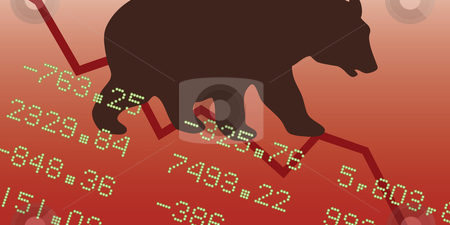Fear is the path to the Dark Side. Fear leads to anger, anger leads to hate, hate leads to suffering. – Yoda, Star Wars Episode I: The Phantom Menace
Remember when everything was falling apart during the 2008/09 financial crisis? Stock and housing prices were falling off a cliff, and a lot of people felt like they got stuck holding the bag. I’m sure you thought something along the lines of, “Just let me catch some of this downside” – it may even have crossed your mind a few times – but you didn’t have the courage to execute.
When the March 2009 low hit, you were frustrated because you knew you could have made some money. The stories seemed to be coming out left and right – this guy made millions, that other guy made millions, all because they shorted the market. Frustrating, wasn’t it? To the guys who traded the market to their advantage, it was crystal clear – they knew what they had to do. But for you, it wasn’t easy to see. In fact, when you’re stuck long, it’s hard to give up on those positions when the market is falling.
Contrarians LOVE trading against the masses – when the bus gets overloaded, it tends to tip over. My Real Money Pro colleague Doug Kass really loves trading against the crowd, and it’s no accident that he’s been in the game for so many years.
The idea of making money on the downside is intriguing, because it is so rare, difficult and elusive to do. When I managed pension funds at Sunkist back in the late 90’s, I had four very talented managers who were mandated strictly to net short. I used them to offset the volatility of the long managers I had in the fund, and it worked out beautifully. Imagine how difficult that was when it seemed like the markets were rising everyday. Yet, they actually made money short in a bull market.
Why is trading the bear side so hard? Simple: The long-term trend for the stock market is up – it always has been. While there are short and sweet bearish moves, the biggest money is made by being long. As a result, we all have a mental block when it comes to being bearish. Oh sure, we might want to do it, but we hesitate and then do nothing. When we’re bearish, we are going against the crowd, and who wants to lose if the rest of the crowd is winning? I have found that being bearish requires being wrong for much longer than you are right. Can you handle that pain until you get paid off? (There are times when it’s smart to go short, like when the Fed has a hawkish bias, but that’s a whole other blog post!)
I started school at San Diego State in fall 1987, about six weeks before the big crash occurred. I was fascinated by the entire event. The fallout and eventual comeback of stocks intrigued me enough to pursue a career in managing funds in financial markets. The stories of those who made millions during the quick and painful downturn were stunning. I wanted to learn what they did so I would be prepared if something like this occurred again.
2013 seemed like an easy year to make money on the long side, right? Buy the dips, hit new highs, rinse and repeat. Coming into this year, it made sense trading would be much more challenging, but when it comes to making money on the downside, you’ve got an uphill battle: the SPX and Dow Industrials are near all time highs and have only dipped at most 5% on the year. For the first four months of this year, implied volatility has been averaging around 15% with only a few temporary spikes higher. Where and when would you put on some bearish exposure? Any push down was squashed quickly by buyers. Yes, some stocks have come down sharply. High beta names like biotech and social media, which were riding high last year, have been blasted. Could you have been trading these names short? Absolutely, but the signals were not so obvious.
I’ve had a few people say to me, “Bob, you are good when the markets are going up – but I have yet to see you make money on the downside.” During the past couple of years, this assessment would be correct. I’m a trend trader, and the trend has been up. As an options swing trader, a bearish bias would have mostly been a losing proposition.
While trading on the downside would have dampened overall volatility, it would also have brought down my overall results, which were strong over the last couple of years (up over 100% on risk in 2012 and in 2013). Back in 2008, finding bearish trades was like shooting fish in a barrel, and we thrived. Will we return to those days?
My answer: not likely, as the Fed is back in control of the game (unlike in 2007/08). I certainly believe there will be opportunities to make money on the bearish side – both this year and beyond – if you pay attention to the charts and indicators and act boldly and quickly. You may just find yourself on the winning side of the trade.




















